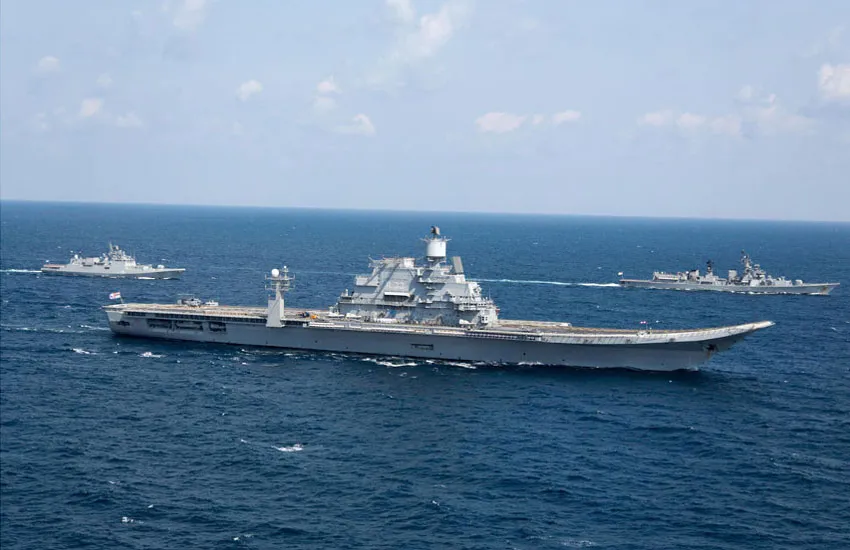Earlier this week, India sent an amphibious warship, INS Airavat, to Madagascar in the Indian Ocean Region (IOR) to help in rescue efforts after the island nation was hit by a cyclone. As part of Operation Vanilla, the Navy delivered clothing, food and medicines, and also provided diving and communication assistance for evacuation. The move follows an appeal by Madagascar President Andry Rajoelina for international help to deal with an unprecedented situation caused by floods.
Component of peacetime strategy
New Delhi’s prompt response doesn’t come as a surprise. In recent years, humanitarian operations have emerged as a key component of the Indian Navy’s peacetime strategy in the IOR. In March 2019, the Navy deployed four warships for relief operations when Mozambique was hit by Cyclone Idai. Indian naval teams played a stellar role in search and rescue operations and even set up medical camps. A few months later, the Navy sent two warships to Japan to assist in rescue efforts following Typhoon Hagibis.
A year earlier, Indian vessels had delivered urgent medical assistance to Sulawesi, Indonesia, after it was struck by a high-intensity earthquake. Operation Samudra Maitri was launched after a telephonic conversation between Prime Minister Narendra Modi and Indonesian President Joko Widodo, with naval planners mobilising assets and relief material in quick time. The Navy’s new humanitarian approach, many say, is a maritime manifestation of Mr. Modi’s vision for the IOR, christened SAGAR (Security And Growth for All in the Region).
Yet the Navy’s turn towards human-centred maritime security isn’t recent. It was in the aftermath of the 2004 tsunami that naval commanders first recognised the importance of large-scale relief and rescue missions in the IOR. For over a decade, considerable resource and energy has been spent developing specialist capability and skills for naval humanitarian operations.
What’s new today is New Delhi’s resolve to burnish its ‘regional security provider’ credentials. The Navy has reached out to countries across the Indo-Pacific region, with greater deployment of assets, personnel and specialist equipment, showcasing an ability to undertake complex and diverse missions. The highpoint of the Navy’s ‘benign’ efforts was the evacuation of over 1,500 Indian expatriates and 1,300 foreign nationals from Yemen in 2015 amid fighting for control of Aden. Three years later, Indian naval ships were in Yemen again, to evacuate 38 Indians stranded in the cyclone-hit Socotra Island.
The Navy’s humanitarian impulse stems from a desire to be a linchpin of security in the IOR. At the core of the evolving operations philosophy is the concept of ‘first responder’, with the capability and willingness to provide assistance. Such an approach has the potential to create an extended sphere of Indian influence in the IOR. Naval leaders recognise that benign missions help project Indian soft power and extend New Delhi’s influence in the littorals. Prompt response during humanitarian crisis helps generate political goodwill in the neighbourhood.
Cause for caution
Yet, there is cause for caution. While low-end naval assets in humanitarian mode create strategic equity for India, prolonged presence of front-line warships in foreign waters has the potential to make partners anxious. Naval power, experts underline, must be deployed discreetly, shaping perceptions in subtle ways. The key is to not let the underlying intent of a mission appear geopolitical.
To ensure that motives aren’t misunderstood, and assistance provided is efficient and cost-effective, it is best to use dedicated disaster-relief platforms. However, unlike the U.S. and China that have in their inventory hospital ships fully equipped for medical assistance, India deploys regular warships and survey ships converted for medical aid. India’s improvised platforms do not match the U.S. Navy’s medical ship USNS Mercy or the People’s Liberation Army Navy’s Peace Ark that enable specialised medical services on a more visible scale.
The Navy’s expanding array of humanitarian missions reveals a need for greater coordination with the Indo-Pacific navies – in particular the U.S. Navy, the Royal Australian Navy and the Japanese Self-Defense Forces — which possess significant experience and assets to mitigate humanitarian threats.
As natural disasters in the IOR become more frequent and intense, India’s regional security role is likely to grow exponentially. At the forefront of disaster scenarios, the Indian Navy and Coast Guard would find themselves undertaking demanding missions. Humanitarian operations could serve as a springboard for a larger cooperative endeavour in the maritime commons.
This commentary originally appeared in The Hindu
The views expressed above belong to the author(s). ORF research and analyses now available on Telegram! Click here to access our curated content — blogs, longforms and interviews.




 PREV
PREV


